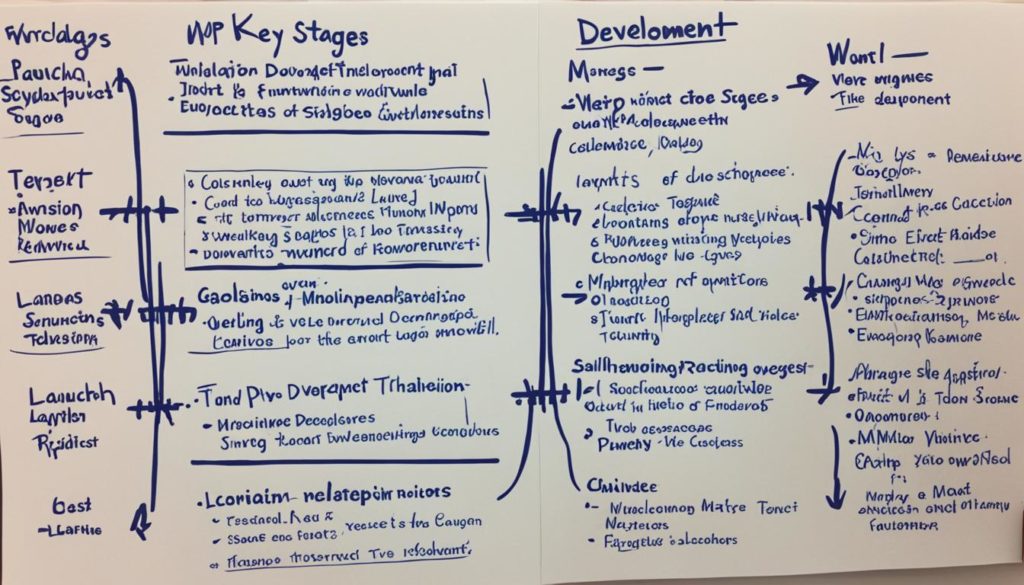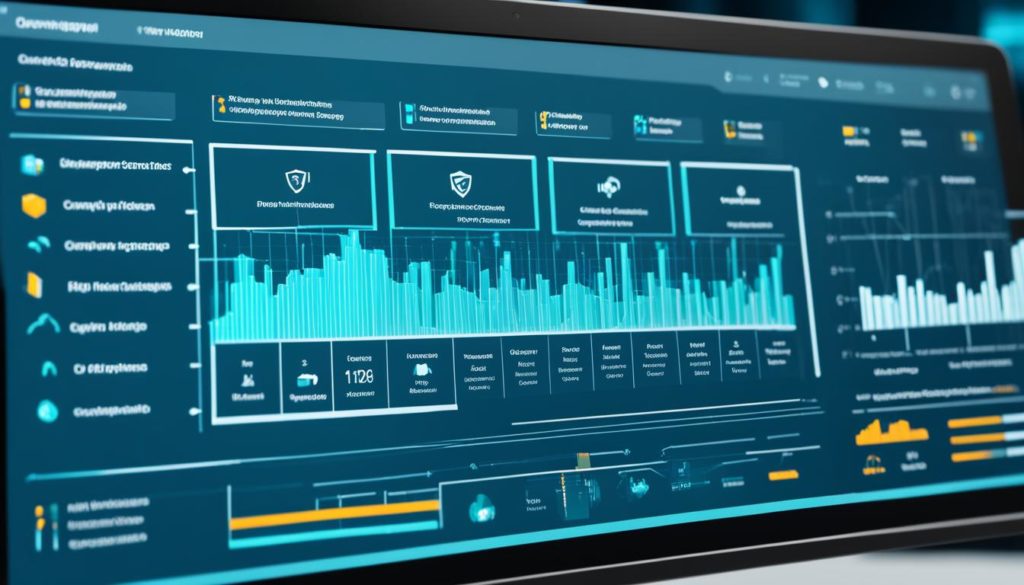
Did you know that companies using Electronic Data Interchange (EDI) see a 30% boost in efficiency? In today’s fast market, this boost is crucial for staying ahead. EDI is a game-changer that automates old manual tasks. It also brings big benefits like cost cuts, better security, and smooth communication.
So, what exactly is EDI? Let’s dive into this powerful tool and see how it can change your business. We’ll look at EDI’s core parts, its history, and why it’s key for today’s businesses.
Key Takeaways
- Businesses using EDI experience a 30% boost in efficiency.
- EDI stands for Electronic Data Interchange, automating various manual business tasks.
- Benefits of EDI integration include cost savings and improved security.
- The importance of EDI lies in its ability to streamline operations and foster seamless communication.
- Understanding how EDI works can provide your business with a significant competitive advantage.
- Historical evolution and core components of EDI will be explored for a comprehensive grasp.
What is EDI?
EDI, or Electronic Data Interchange, makes business processes faster by sending documents electronically. It uses a standard format. This way, businesses can send things like purchase orders and invoices quickly and without mistakes.
Definition and Overview
The Electronic Data Interchange definition says it’s a structured way to send business info between companies online. It makes sure the data is the same everywhere and cuts down on mistakes. EDI software is key in turning paper processes into electronic ones, making things smoother and quicker.
History and Evolution
EDI started in the 1960s to help companies switch from paper to electronic processes. Over time, it grew to include standards like ANSI X12 for North America and EDIFACT for the world. These standards made EDI more popular and compatible across different systems.
Core Components
EDI systems have important parts that work together for smooth electronic transactions:
- Web-based EDI Translator: Changes business documents into a standard EDI format.
- EDI Mapping Tables: Tell how data moves between formats.
- Secure Dedicated Transaction Network: Keeps data safe as it moves between companies.
- Support and Maintenance Services: Crucial for EDI systems to work well and fix problems.
Knowing these parts is key for using EDI software well and making the most of different EDI transactions for your business.
The Benefits of EDI for Businesses
EDI brings many benefits to businesses by making processes smoother and more efficient. It automates data entry and document exchange, speeding up transactions and making them more accurate. Let’s look at the key benefits of EDI that companies gain from using it.
Efficiency and Speed
EDI greatly increases business efficiency. It automates the exchange of documents, cutting out manual data entry. This makes transactions faster and ensures documents are sent in real-time, making businesses more agile.
With less manual work, staff can focus on important tasks, boosting productivity even more.
Cost Reduction
EDI brings big cost savings to businesses. It cuts down on paper, printing, storage, and postage costs. Automation also lowers labor costs from manual document processing.
Plus, fewer errors mean less money spent on fixing mistakes.
Accuracy and Security
EDI makes data exchanges more accurate by reducing human error. It uses standardized formats and automated checks for this. Plus, EDI keeps data safe with encryption and secure communication.
This protects sensitive info from unauthorized access, helping businesses meet legal standards and gain trust with partners.
Enhanced Business Relationships
EDI’s accuracy and speed improve business relationships. Reliable, fast data exchange builds trust with partners, leading to better collaboration and lasting partnerships. It ensures smooth, consistent data exchange, boosting EDI business efficiency.
How EDI Works
Understanding how EDI works means knowing the steps from document prep to the final acknowledgment. It’s a detailed process that ensures smooth EDI transaction processing.
Preparation of Documents
The first step is getting documents ready. Here, business documents like invoices and shipping notices are turned into a standard EDI format. This is done using mapping tools, making them readable for EDI systems.
Transmission Over a Secure Network
After preparation, the documents are sent over a secure network. This can be through the internet or more secure networks like VANs, ensuring secure EDI transmission. These networks use encryption and other security to keep data safe.
Receipt and Integration
When the data arrives, the recipient’s EDI system processes it. Then, it gets added to systems like ERP, making sure the data fits into business processes. This makes EDI transaction processing smooth and efficient.
Acknowledgment
The last step is sending an acknowledgment. This tells the sender that the document was received and added to the system. It keeps everyone updated on the transaction status.
| Step | Description | Key Component |
|---|---|---|
| Preparation of Documents | Converting business documents to EDI format | Mapping Tools |
| Transmission Over a Secure Network | Ensuring secure data transmission | Internet Protocols, VANs |
| Receipt and Integration | Integrating EDI data into internal systems | ERP Systems |
| Acknowledgment | Sending confirmation to the document sender | Feedback Loop |
Implementing EDI in Your Business
Starting with EDI implementation best practices is crucial for success. It’s important to pick the right EDI solutions and integrate them well into your business. Let’s look at the key steps for this.
First, look at the different EDI solutions out there. You have:
- On-premise EDI
- Cloud-based EDI
- EDI via VAN (Value Added Network)
Each option has its own benefits. On-premise EDI gives you full control, cloud-based EDI saves money, and EDI via VAN boosts security. Think about these points to choose the best fit for your business.
- Pick EDI software that matches your business needs and fits with your current systems.
- Make sure your network is strong for smooth data exchange with trading partners.
- Think about support and updates to keep your EDI system running well.
Using EDI can really improve how your business runs, especially in managing stock and filling orders. By automating data exchange with EDI, you get more accurate data, fewer mistakes, and a better supply chain.
Adding EDI to your business can change things for the better. It makes sure your operations flow smoothly and helps your business grow strategically.
Conclusion
As we finish looking at Electronic Data Interchange, it’s clear that using EDI is a smart move for businesses. This tech brings unmatched precision to transactions, cuts out manual mistakes, and lowers costs. By automating data exchanges, companies can spend more time on growth and new ideas.
The effect of Electronic Data Interchange goes beyond just making things run smoother. It helps build strong partnerships based on trust and accuracy, key in today’s competitive world. EDI changes how businesses talk to each other, making things quicker, safer, and very reliable.
In the end, EDI brings many benefits to businesses. It boosts productivity, makes things more accurate, and helps build strong, honest relationships. As we dive deeper into the digital world, using EDI is not just an option but a must for staying competitive and flexible.
FAQ
What is EDI?
EDI stands for Electronic Data Interchange. It’s a way to send business documents digitally between companies. Instead of using paper, EDI sends things like purchase orders and invoices online.
What are the core components of an EDI system?
An EDI system has four main parts. These include a web-based translator, EDI mapping tables, a secure network, and support services. These help keep the system running smoothly.
How does EDI improve business efficiency and speed?
EDI makes things faster by automating tasks like data entry. This cuts down on errors and speeds up communication. It makes businesses work more efficiently.
What cost reductions can be expected with EDI implementation?
With EDI, companies save money on paper, printing, storage, and labor. This happens because there’s less manual work and processes are streamlined.
How does EDI enhance accuracy and security?
EDI reduces errors by automating data. It also keeps data safe with encryption and secure protocols. This protects sensitive information.
What role does EDI play in enhancing business relationships?
EDI helps build strong business relationships by ensuring messages are clear, on time, and accurate. This builds trust and credibility with trading partners.
Can you explain the process of how EDI works?
EDI works by preparing documents in a special format, sending them over a secure network, and then integrating them into the system. Finally, an acknowledgment is sent to confirm they were received.
What are the different types of EDI transactions?
EDI transactions include things like purchase orders, invoices, and shipping notices. They follow standards like ANSI X12 and EDIFACT.
What should we consider for successful EDI implementation?
For EDI to work well, pick the right software, make sure the network is reliable, and consider support for updates. It should fit your business needs.
What’s the importance of EDI in modern business operations?
EDI is key for today’s businesses. It makes transactions more precise, cuts costs, improves security, and strengthens partnerships. It gives businesses a competitive edge by making processes smoother and more efficient.
Future App Studios is an award-winning software development & outsourcing company. Our team of experts is ready to craft the solution your company needs.










